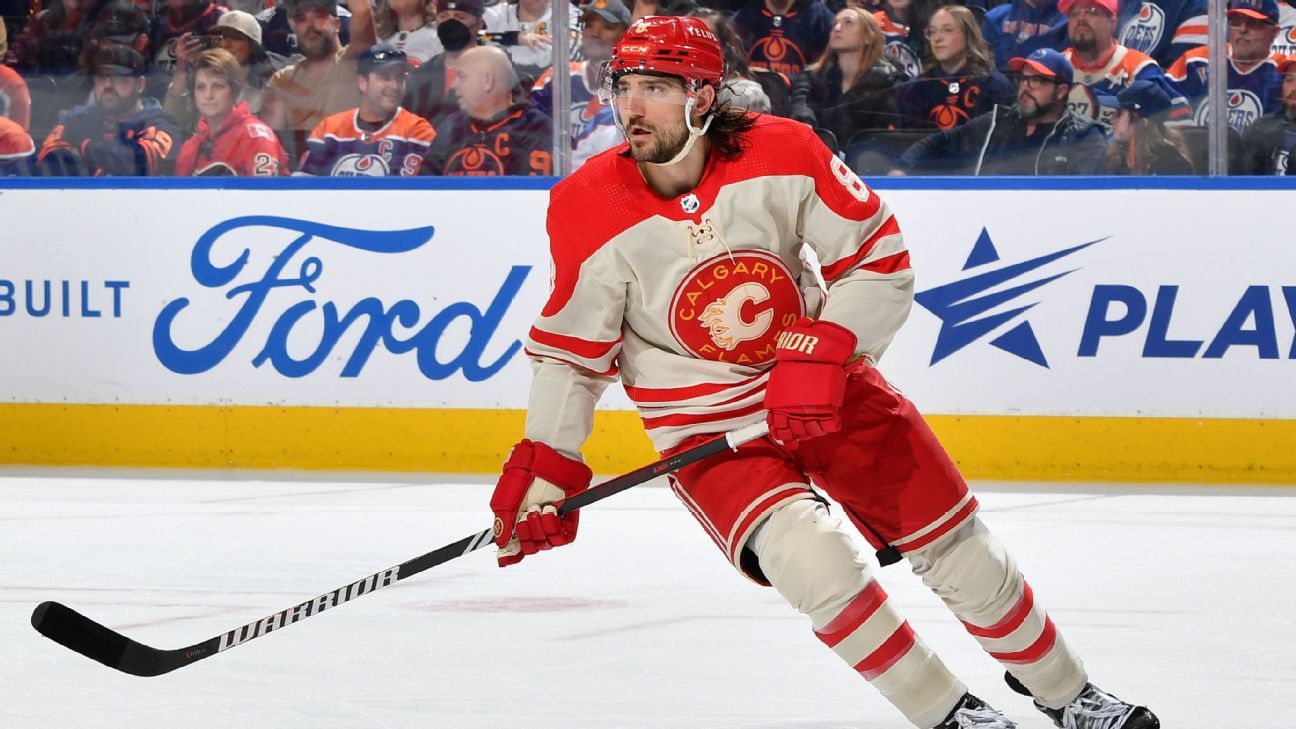One of the top players believed to be available at the 2024 NHL trade deadline has been dealt.
The Dallas Stars have landed defenseman Chris Tanev from the Calgary Flames, in exchange for defenseman Artem Grushnikov, the Stars’ 2024 second-round pick and a conditional 2026 third-round pick (the pick changes hands if the Stars make the 2024 Stanley Cup Final). The Stars also received the rights to University of Massachusetts goaltender Cole Brady.
In order to facilitate the deal, the New Jersey Devils will pick up 50% of Tanev’s salary, and were sent Dallas’ fourth-round pick in the 2026 draft as compensation for doing so.
How did the GMs do in this deal? Here are our grades:


The salary cap inherently discourages transactions because of its fiscal constrictions. At the same time, it encourages some managerial ingenuity.
That was on full display Wednesday night when Stars GM Jim Nill used a three-team trade to acquire the best defensive defenseman at the deadline with an expiring contract, for a miniscule cap hit and without having to sacrifice a first-round pick. It’s a trade that sets up Dallas for a Stanley Cup run and protects the Stars’ cap space and assets for further roster augmentation before next week’s NHL trade deadline.
It’s a major W for Big D.
Tanev, 34, is the quintessential “last piece of the puzzle” player for the 2024 deadline. He’s a 14-year veteran who plays on the right side. He’s a rugged throwback who is considered one of the NHL’s most effective defensive defensemen, but one who can also break out the puck offensively. He ranks second overall in the NHL in blocked shots (171). He’s played his entire career in the Western Conference, so he knows the Stars’ playoff competition quite well.
It’ll be fascinating to see where coach Pete DeBoer ends up using Tanev on his back end, because he has options. Among the natural left side defensemen on the roster are Esa Lindell, Ryan Suter and 22-year-old Thomas Harley, who is second on Dallas in average ice time this season and has been playing with star defenseman Miro Heiskanen.
Also a natural left side defenseman: Heiskanen, who has been playing on his off side with a number of teammates this season. Pairing Tanev with Heiskanen would allow Dallas’s best defenseman to move back to the left side and go full throttle offensively, knowing that Tanev has the back end covered. It’s a role Tanev has played for defensemen ranging from Quinn Hughes to Noah Hanifin.
Thanks to the salary retention by the Flames and Devils, Tanev has a cap hit of just $1.125 million, which is lower than that of defenseman Jani Hakanpää, and Chris Tanev is slightly better at hockey than Jani Hakanpää.
The Stars essentially traded a 2024 second-round pick, a 2026 fourth-round pick and Grushnikov for Tanev. They could afford to trade Grushnikov, as defense is an organizational position of strength. The 2026 third-round pick is conditional: Calgary receives it if the Stars make the Stanley Cup Final, which they’ll gladly ante up.
The Stars also snagged a goalie prospect in Cole Brady from the Devils. More on him in a bit.
The reason we can’t go all the way to ‘A+’ or ‘A’ on this one is that Tanev is 34 years old, he has played 773 games over 14 years and he’s played 70 games in a season only twice in his career. He’s got some miles on him. But that’s why the Stars wanted him: His experience, his savvy and his will to win his first Stanley Cup.
Overall, a tremendous trade for the Stars.

We praised GM Craig Conroy for the return he received in the Elias Lindholm trade with Vancouver, and hence were interested in seeing what he could pull at the trade deadline for Tanev, Noah Hanifin and potentially Jacob Markstrom. Looking at this trade … well, he still has Hanifin and potentially Jacob Markstrom.
Conroy told Fan 960 in Calgary that there was “lots and lots” of interest in Tanev from playoff contenders and teams outside the playoff picture. Whatever the market was for him, Conroy didn’t leverage it enough.
For 50% salary retention, Calgary acquired a 2024 second-round pick that could be low enough to essentially be a third-rounder given how good Dallas is this season; defenseman Artem Grushnikov, whom we will discuss in a moment; and a conditional 2026 third-round pick that only manifests if Dallas makes the Stanley Cup Final this season. There is a possible future reality in the NHL multiverse in which the Flames and Stars meet in the first round, in which Calgary will attempt to cost itself a third-round draft pick.
In Grushnikov, the Flames have acquired someone they hope becomes Chris Tanev, basically. They’re around the same size. They’re both defensive defensemen, with Conroy calling out Grushnikov’s penalty killing prowess and his work in the defensive zone. He has a high compete level and has fared well in his first AHL season. But he doesn’t have the puck movement skills of Tanev and there hasn’t been much evidence that he’s anything more than a big hitting defender who’s solid in his own end. Conroy seems fine with that one-dimensional play and the fact that he’s got proof of concept rather than the mystery of a draft pick.
Grushnikov’s development is the key to the deal. Otherwise, the Flames acquired a pick that might not be within the first 60 in the draft, and another pick that won’t exist if the Stars fall short of the Stanley Cup Final. That was for allegedly the most coveted defensive defenseman at the deadline who generated “lots and lots” of interest.

Well, this wasn’t the New Jersey-Calgary trade involving a goalie we thought we’d see at the deadline. But then again we also didn’t anticipate the Devils would be a salary cap retention intermediary at the deadline, either.
The Devils took on $1.125 million in dead cap space for a 2026 fourth-round pick from Dallas. They had the space to do so, with Dougie Hamilton on long-term injured reserve, taking more than $8.3 million off their cap.
The Devils had to trade a player rather than “future considerations” in the deal, so they sent unsigned goalie prospect Cole Brady to the Flames for Tanev, and then the Flames traded Brady to the Stars to complete the three-way deal.
Brady has played nine games at UMass this season with an .886 save percentage. He transferred there in 2022 after two seasons at Arizona State. The Devils took him in the fifth round in 2019. That New Jersey is punting on a goalie prospect should tell you all you need to know about their relationship with Brady and where he fits in their future plans. His rights expire this summer, making this just a name to satisfy a requirement and probably not much more.
The post NHL trade grades: Tanev addition — at that price — a huge win for the Stars appeared first on Patabook Sports.

